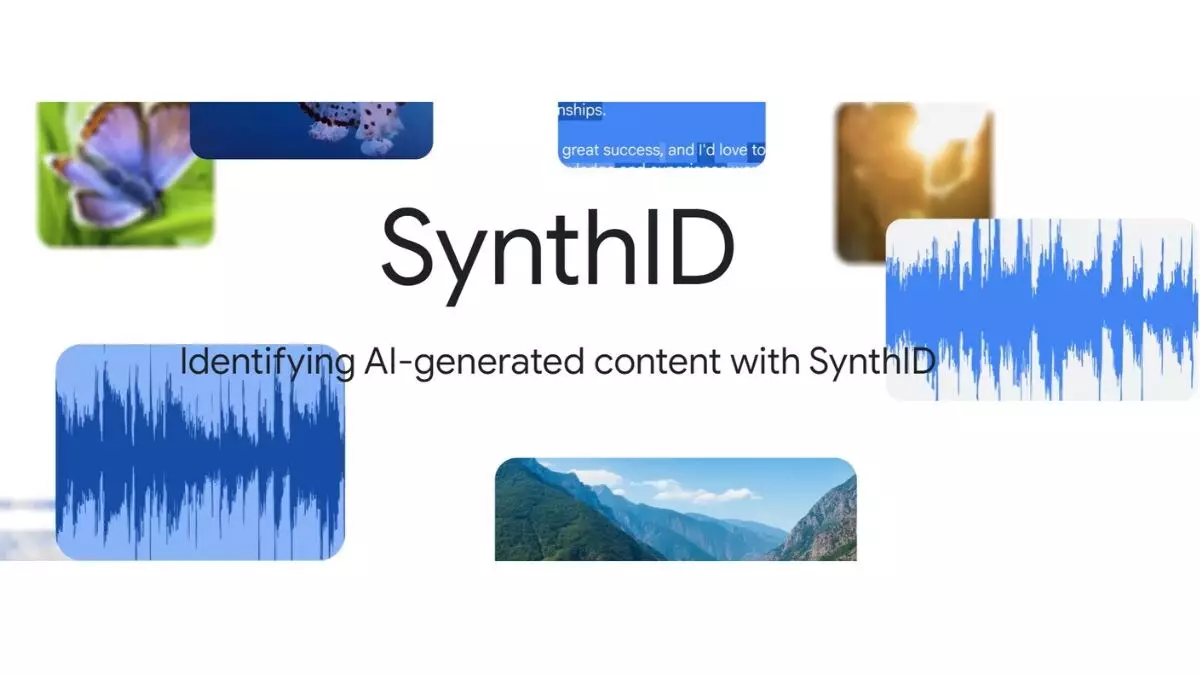On a recent Wednesday, Google DeepMind made headlines by announcing the launch of SynthID, a pioneering watermarking technology designed specifically for recognizing AI-generated text. Although this initiative holds promise for various forms of content—including images, videos, and audio—it currently focuses solely on text watermarking, which is made available to businesses and developers. The overarching goal is to enable a robust monitoring system for AI-generated content, helping both individuals and enterprises discern between human-created and machine-generated text more effortlessly.
The digital landscape has seen an overwhelming influx of AI-generated content, with data from Amazon Web Services AI lab indicating that about 57.1% of sentences online, when translated into two or more languages, are generated by AI. This growth raises significant concerns, as the ease of creating content through advanced AI tools leads not only to an abundance of material but also to potential misuse. The concern isn’t just about innocuous spamming; it’s about the threat posed by misinformation and disinformation. Bad actors can exploit these AI capabilities to fabricate false narratives, which could have considerable consequences in real-world situations, including influencing elections or generating propaganda against public figures.
Among the various challenges present in evaluating AI-generated content, text remains the most complex to authenticate. Traditional methods of watermarking are ineffective because they cannot be applied directly to words. Furthermore, even if such a method existed, adversaries may easily adapt the content through rephrasing, rendering any watermark useless. This landscape necessitates innovative solutions that can effectively identify AI-generated content without being easily circumvented.
SynthID takes a distinctive approach by leveraging machine learning to watermark AI-generated text. The tool’s innovative method is predicated on predicting the likely continuation of text. For instance, consider the sentence, “John was feeling extremely tired after working the entire day.” Machine learning algorithms can analyze this structure and identify that only a limited range of words might logically follow “extremely.” By substituting these expected words with synonymous alternatives pulled from its database, SynthID discreetly embeds a watermark throughout the document.
By focusing on sentence structures and word prediction, SynthID aims to create an unbreakable link to AI-generated content, establishing a systematic way to recognize machine-produced material. This method grounds its efficacy in the inherent patterns of language generated by AI, adding a layer of sophistication to the question of authenticity.
While the initial rollout of SynthID primarily addresses text content, the technology promises additional capacities for multimedia. For image and video files, SynthID works by embedding watermarks directly into the pixels, maintaining an illusion of normalcy while allowing for later detection. Similarly, audio files undergo a transformation into spectrographs, where watermarks are intricately woven into the visual representation of sound waves. This multilayered approach to content validation makes SynthID a powerful tool for safeguarding digital integrity across various formats.
The significance of SynthID extends beyond mere functionality; it catalyzes a larger conversation about the ethics of AI content creation and the societal implications of rampant misinformation. As AI technologies continue to proliferate, tools like SynthID become essential in restoring trust in digital content. By providing developers and businesses with a means to authenticate their online contributions, Google DeepMind is taking a crucial step toward fostering transparency in an age where manipulation of information can have real-world ramifications.
While SynthID represents a monumental advancement in digital watermarking, the challenges of authentication and the potential for misuse encourage ongoing dialogue within the tech community and society at large. Addressing these facets will be vital for the responsible development and deployment of AI technologies moving forward, ensuring that the benefits of AI can be enjoyed without compromising the integrity of human expression.

Leave a Reply